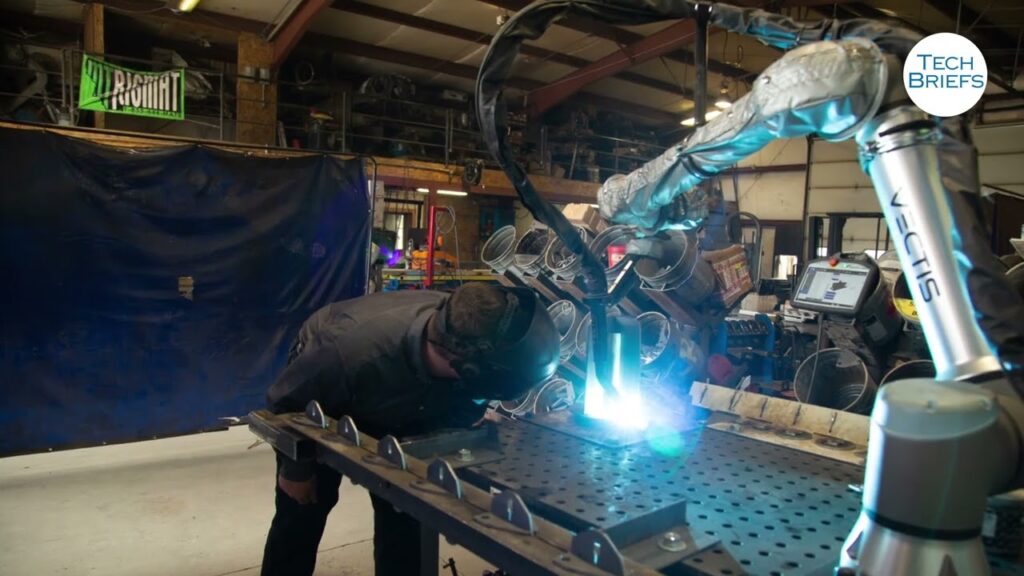Collaborative robots, or cobots as they are commonly referred to, have revolutionized the industrial landscape in recent years. By seamlessly integrating with human workers, cobots have proven themselves to be effective in a wide range of industrial applications. From dull and dirty tasks to high-precision operations, cobots have greatly enhanced productivity and efficiency in the manufacturing sector.
One of the key advantages of cobots is their ability to take over monotonous and repetitive tasks, allowing human workers to focus on more complex and creative aspects of their jobs. This not only improves job satisfaction but also reduces the risk of injuries associated with performing mundane tasks for prolonged periods of time. By automating such tasks, cobots can help businesses optimize their workforce and allocate human resources to areas that require human intervention.
In addition to relieving human workers of mundane duties, cobots excel in handling dirty and hazardous tasks. Industrial environments often consist of harmful substances, extreme temperatures, or exposure to toxic chemicals. In such conditions, cobots can operate without risking the health and safety of human workers. This not only ensures a healthier work environment but also prevents accidents and potential legal liabilities. By taking on these hazardous tasks, cobots can thereby significantly reduce risks and increase operational efficiency.
Four major industrial applications of collaborative robots stand out as shining examples of their effectiveness. The first is in material handling, where cobots excel in tasks such as pick-and-place operations, bin-picking, and conveyor belt sorting. With advanced sensors and vision systems, cobots are able to swiftly and accurately handle various objects, regardless of their size, shape, or fragility. This improves overall productivity, minimizes errors, and reduces the likelihood of damaged goods.
Another significant application of cobots lies in assembly and inspection processes. Cobots can effortlessly perform precise assembly tasks, such as screwing, gluing, and welding, ensuring consistent quality and eliminating human errors. Additionally, cobots equipped with vision systems can conduct thorough inspections, identifying defects and anomalies that may not be easily detectable by humans. This increases product quality and reduces the likelihood of faulty items reaching the market.
Cobots also play a vital role in the realm of machine tending. They are capable of efficiently handling repetitive tasks such as loading and unloading parts, tool changes, and quality control checks in a wide range of machinery, including CNCs, injection molding machines, and 3D printers. By assuming these responsibilities, cobots contribute to an uninterrupted workflow, enhanced machine uptime, and increased output.
Lastly, cobots have found their niche in the packaging and palletizing industry. Handling products of various shapes, sizes, and weights, cobots can efficiently pack and palletize goods, significantly reducing packaging time and costs. Moreover, cobots can adapt to different packaging requirements, ensuring flexibility in a dynamic market. With their ability to work alongside humans in close proximity, cobots excel in collaborative packing scenarios, where speed and precision are of utmost importance.
Industrial robots applications have seen a remarkable transformation with the introduction and integration of collaborative robots. These versatile machines have proven their effectiveness in performing dull, dirty, and hazardous tasks, allowing human workers to focus on more complex and creative aspects of their jobs. Material handling, assembly and inspection, machine tending, and packaging and palletizing are just a few examples of the successful implementation of cobots in industrial settings.
As technology continues to advance, the capabilities of cobots are expected to evolve even further. With advancements in artificial intelligence, machine learning, and computer vision, cobots will become increasingly sophisticated and adaptable. This opens up new possibilities and opportunities for their utilization in various industries.
In conclusion, collaborative robots have demonstrated their effectiveness and efficiency in a wide range of industrial applications. By taking over dull, dirty, and hazardous tasks, cobots enhance productivity, reduce the risk of injuries, and improve overall operational efficiency. Material handling, assembly and inspection, machine tending, and packaging and palletizing are just a few examples of the valuable contributions cobots have made to the industrial landscape. With continuous advancements in technology, the future looks promising for cobots as they continue to pave the way for increased automation and optimization in industrial settings.
Industrial Robot
“The Power of Collaboration: Exploring Industrial Applications of Robots for Enhanced Efficiency”


